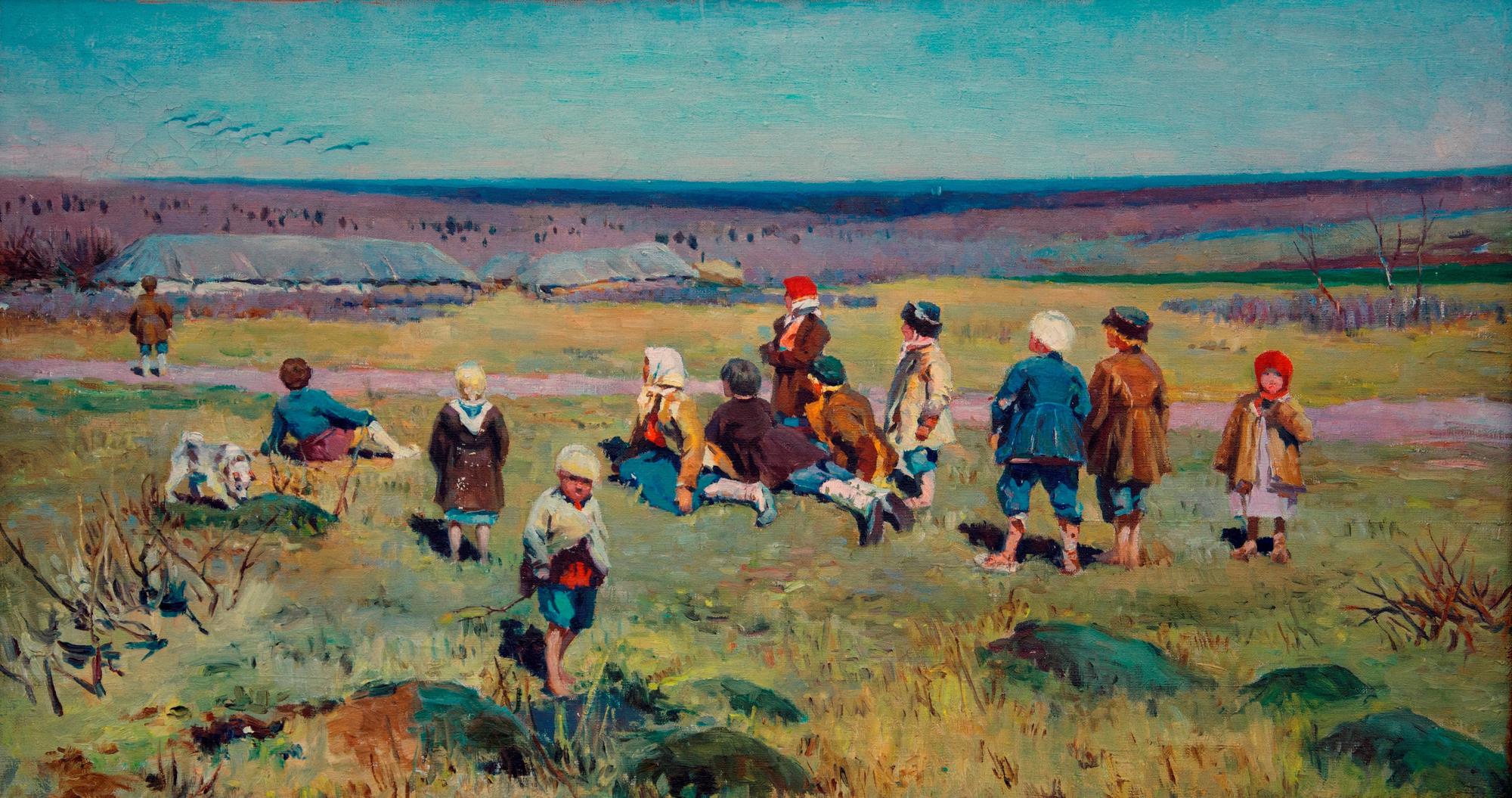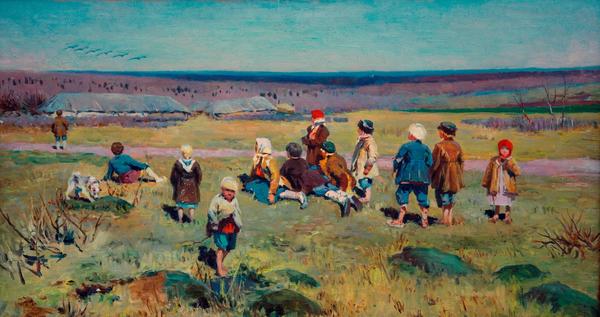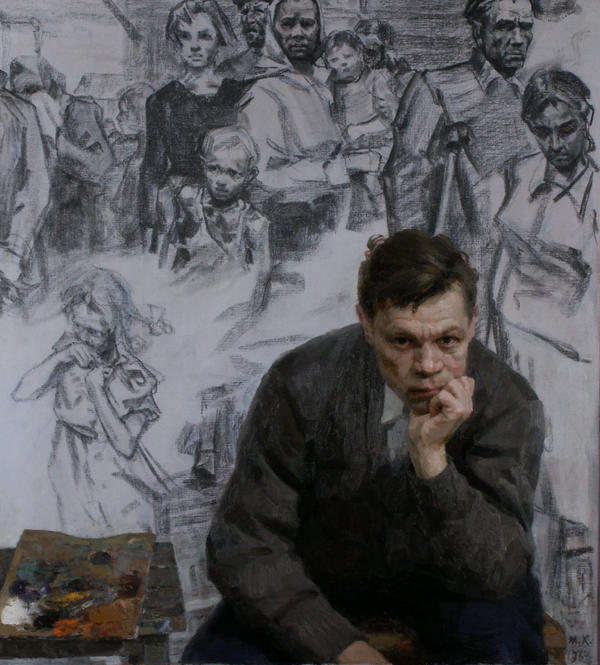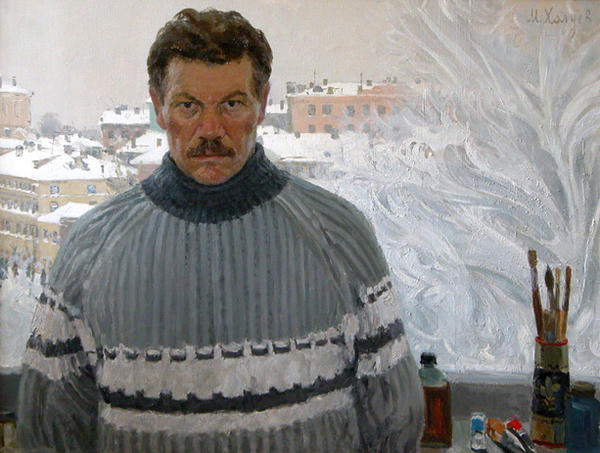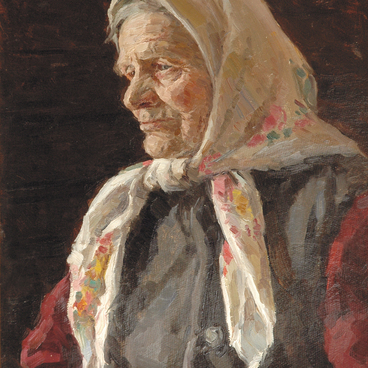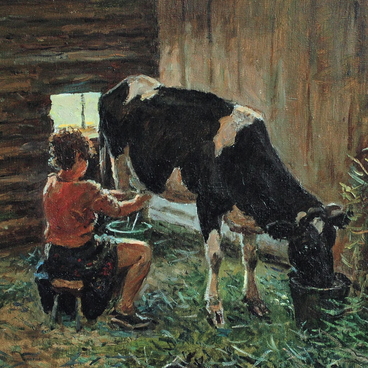At All-Union and republican exhibitions, Mikhail Kholuev was known primarily as an artist who was concerned with social and historical topics, depicting such scenes and events as construction sites, political events and the World War II in his works. Less known are his lyrical works – Volga landscapes, scenes of rural life, still life paintings and portraits of women. These paintings allow us to take a fresh look at his work.
The painting The Cranes are Flying depicts peasant children who are watching a flock of cranes flying in V formation. Kholuev was a master of multi-figure compositions, and even here, in this landscape, we can see that the composition of the children is elaborated in a very professional manner.
The painting is called The Cranes are Flying, yet the main characters here are not birds but children. The artist depicted them defenceless and sweet, dressed in simple, somewhat shabby clothes. Interestingly, the artist strays away from the contemporary in this painting; judging by the clothes, the scene is set in the first half of the 20th century.
An everyday scene, a simple plot, but it evokes mixed feelings, from the lyrical to the sentimental. Unconsciously, you start to think about these children, who themselves resemble a flock of birds and who are destined to face severe trials in their homeland.
The picture is painted in the best traditions of 19th century Russian realism, combining historical plausibility with deep psychologism. An interesting detail here is that two of the children are looking directly at the viewer. The artist creates a kind of invisible bridge, a spiritual contact between the beholder and the depicted, involving the viewer in what is happening in the picture. We should give credit to Kholuev as a talented colourist: yellow, sandy shades in combination with the blue and lilac tones of the sky accurately recreate the atmosphere of an ‘Indian summer.’ It is during this time of year that flocks of cranes migrate for the winter.
The painting The Cranes are Flying depicts peasant children who are watching a flock of cranes flying in V formation. Kholuev was a master of multi-figure compositions, and even here, in this landscape, we can see that the composition of the children is elaborated in a very professional manner.
The painting is called The Cranes are Flying, yet the main characters here are not birds but children. The artist depicted them defenceless and sweet, dressed in simple, somewhat shabby clothes. Interestingly, the artist strays away from the contemporary in this painting; judging by the clothes, the scene is set in the first half of the 20th century.
An everyday scene, a simple plot, but it evokes mixed feelings, from the lyrical to the sentimental. Unconsciously, you start to think about these children, who themselves resemble a flock of birds and who are destined to face severe trials in their homeland.
The picture is painted in the best traditions of 19th century Russian realism, combining historical plausibility with deep psychologism. An interesting detail here is that two of the children are looking directly at the viewer. The artist creates a kind of invisible bridge, a spiritual contact between the beholder and the depicted, involving the viewer in what is happening in the picture. We should give credit to Kholuev as a talented colourist: yellow, sandy shades in combination with the blue and lilac tones of the sky accurately recreate the atmosphere of an ‘Indian summer.’ It is during this time of year that flocks of cranes migrate for the winter.
